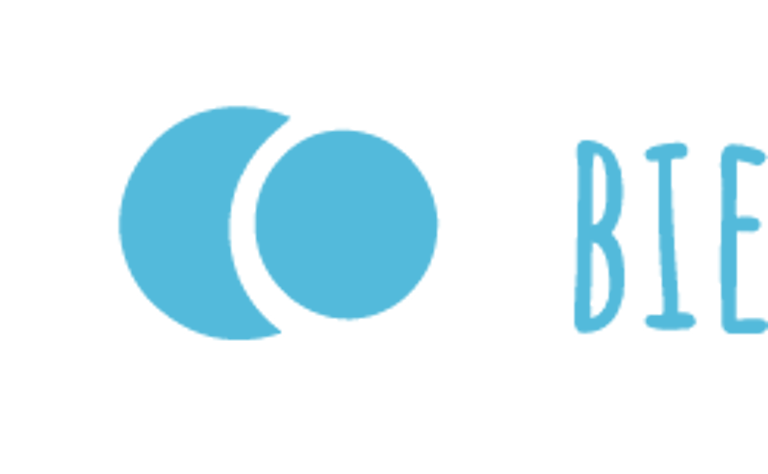
Balance sheets of money circulation with basic income.
Money circulation across central bank, commercial banks, firms, households, and the government.
STATE MONEY
Banks & State Money Circulation
Interaction of Firms and Households with Banks and Central Bank. The creation and reduction of loans and deposits.
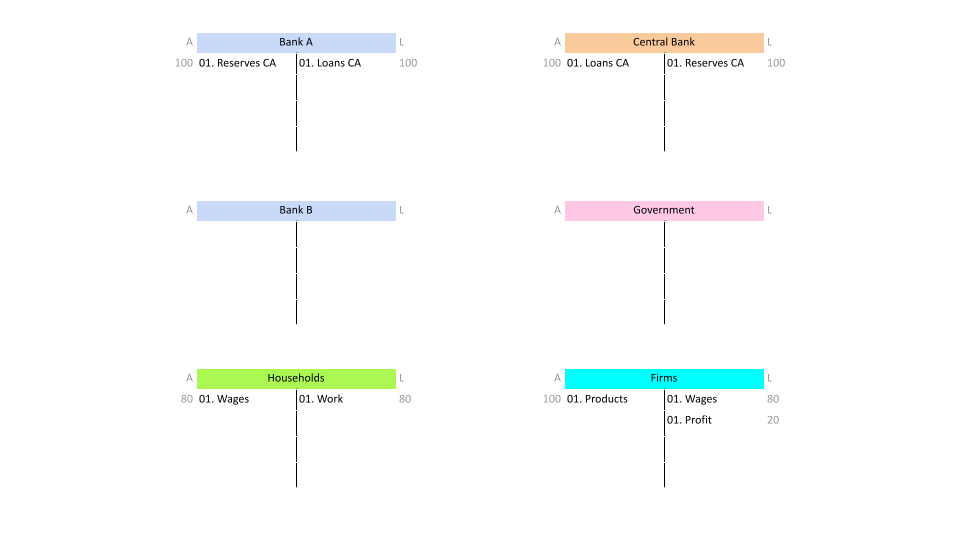

01. A firm supplies products, owing a wage to a households (employee), and earns a profit. A household works for a wage.
01. A bank borrows capital from the central bank to operate, in anticipation of loan demand from the firm.
The loan to the bank is credited and bank's reserves are deposited in the central bank.
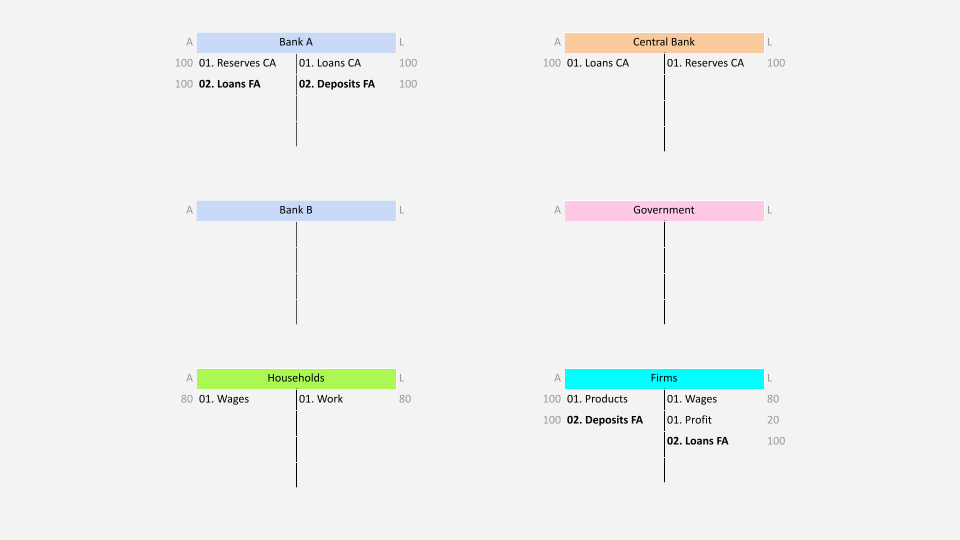

02. Now the bank can provide a loan to a client. New deposits are credited into the client's account.
The bank needs reserves to cover potential transfer of deposits to other banks or to pay cash in case of withdrawal.
However, the bank needs just a fraction of reserves since not all deposits will be transfered at once.
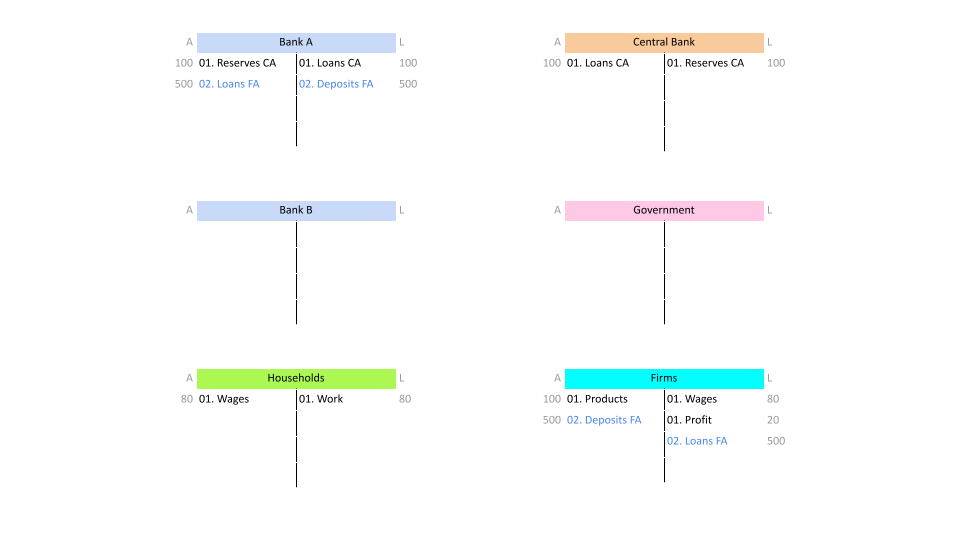

So the bank can provide new loans.
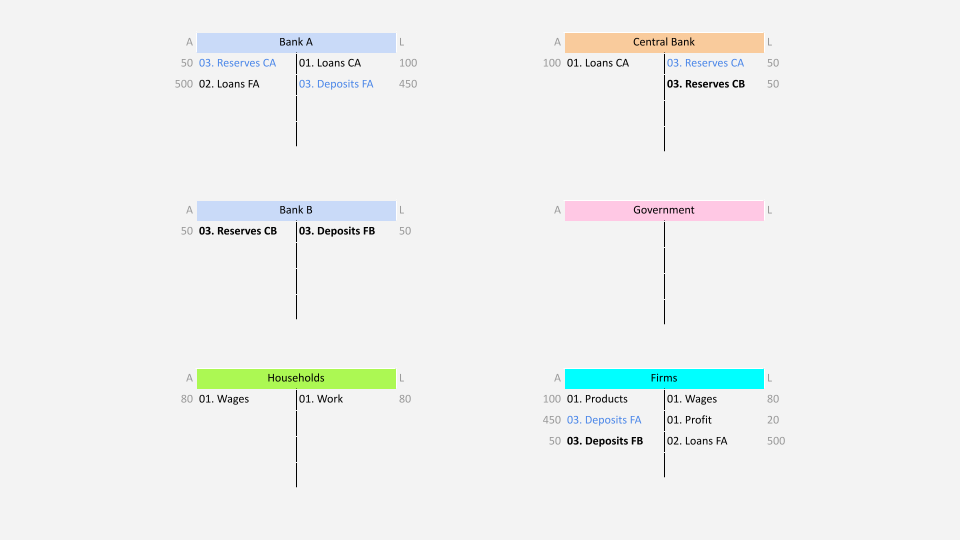

03. Some deposits are transferred to the second bank.
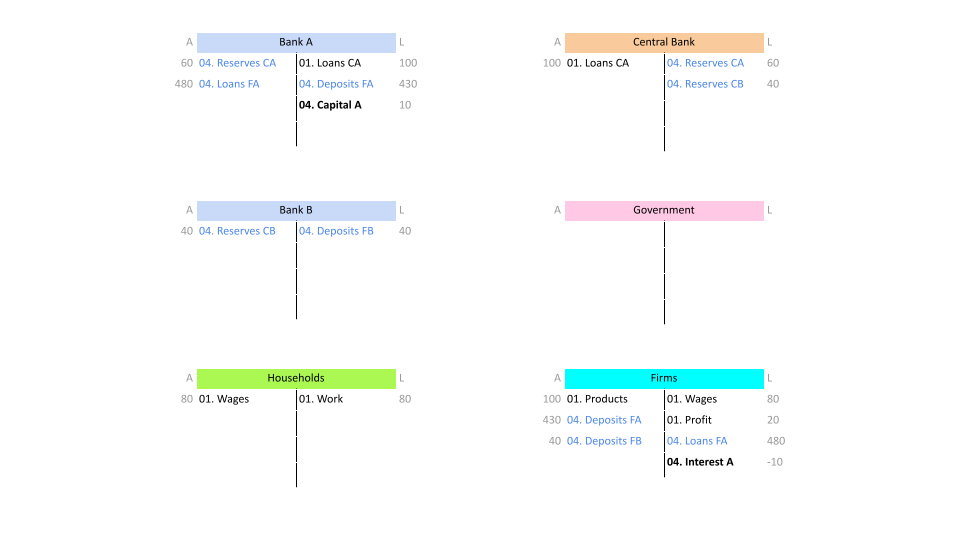

Clients repay part of their loans. Since the interest on loans is higher than the interest on deposits, banks effectivelly earn money from clients.
As a result, Bank A is making profit.
04. The profit is transferred to the capital of the bank.
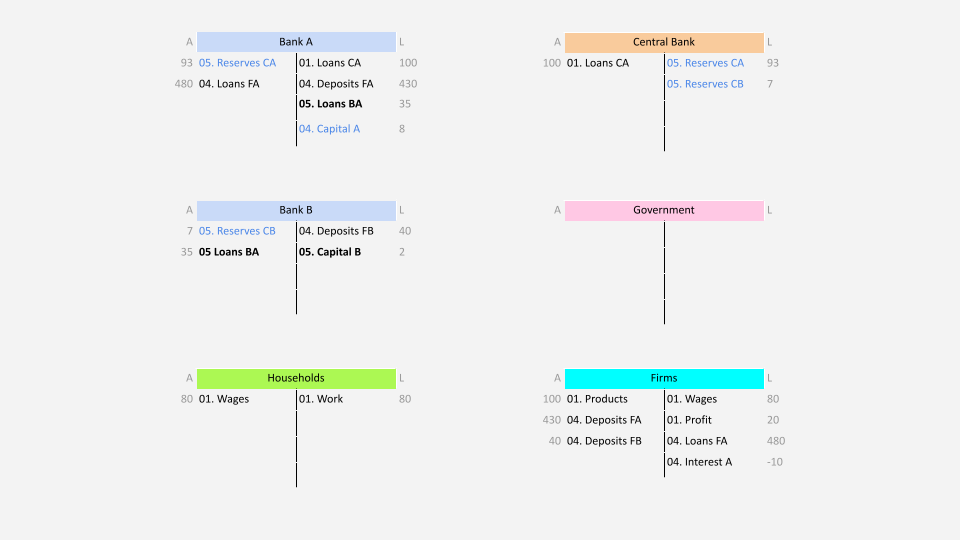

05. Bank B lends excess reserves to Bank A for interest transferred to capital.
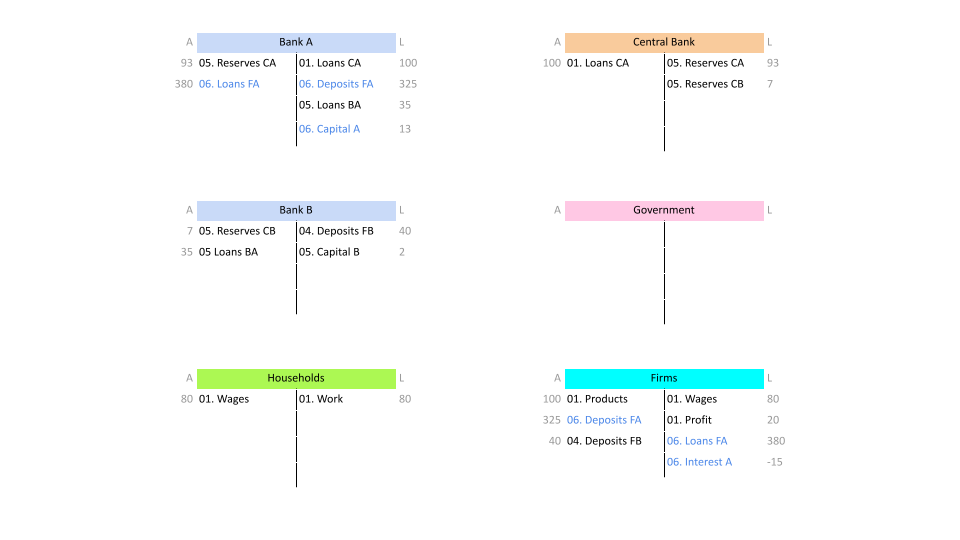

06. Some of the loan and interest are repaid.
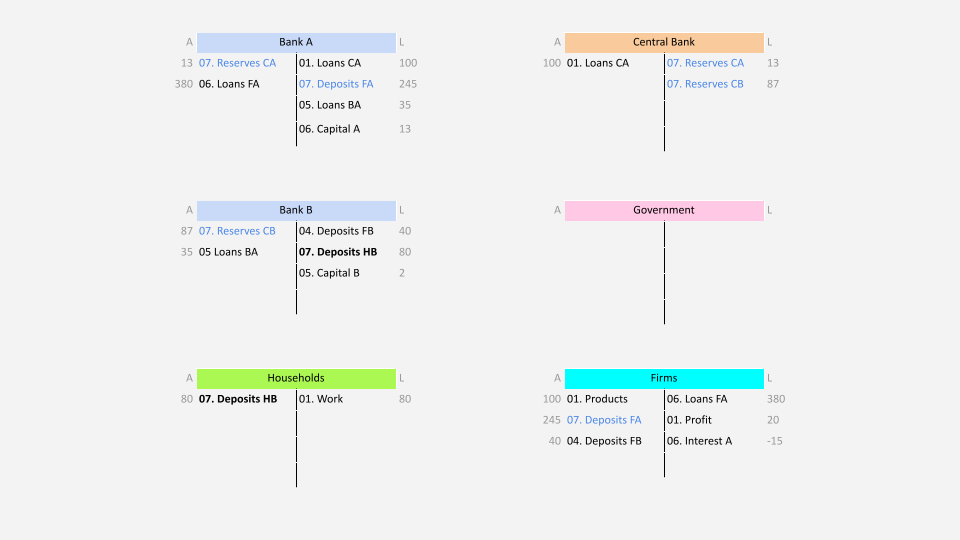

07. The firm pays the wage.
The household deposits the income into Bank B.
Government & State Money Circulation
Interaction of Government with Firms, Households, Banks and Central Bank. The creation and reduction of money in circulation. Basic Income.
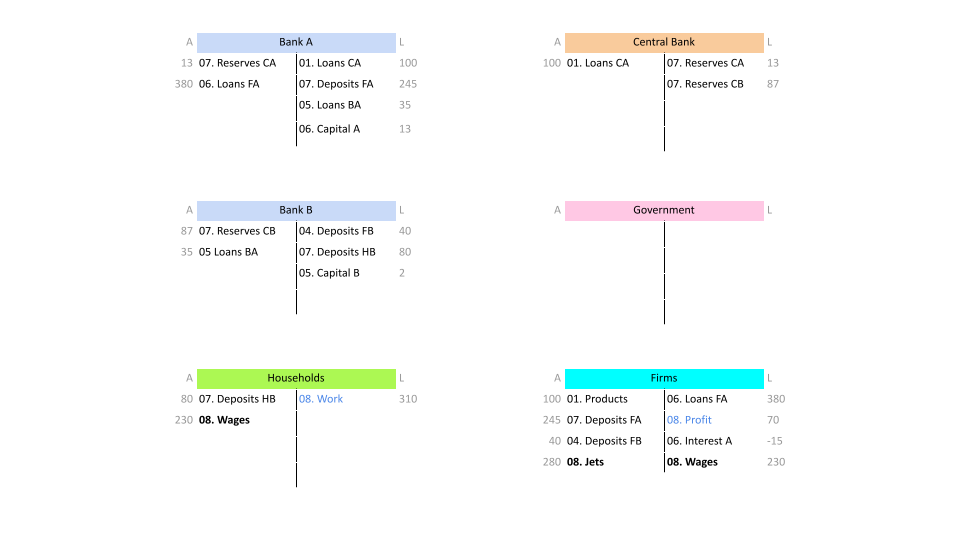

08. Let the households and firms produce three jets for government.
When a government spends, there is a simultaneous credit to someone's bank deposit and the bank's reserve deposit at the central bank.
Taxes are the reverse of that operation.
Self-Imposed Tax Constraint
Balanced Budgets - no deficit spending.
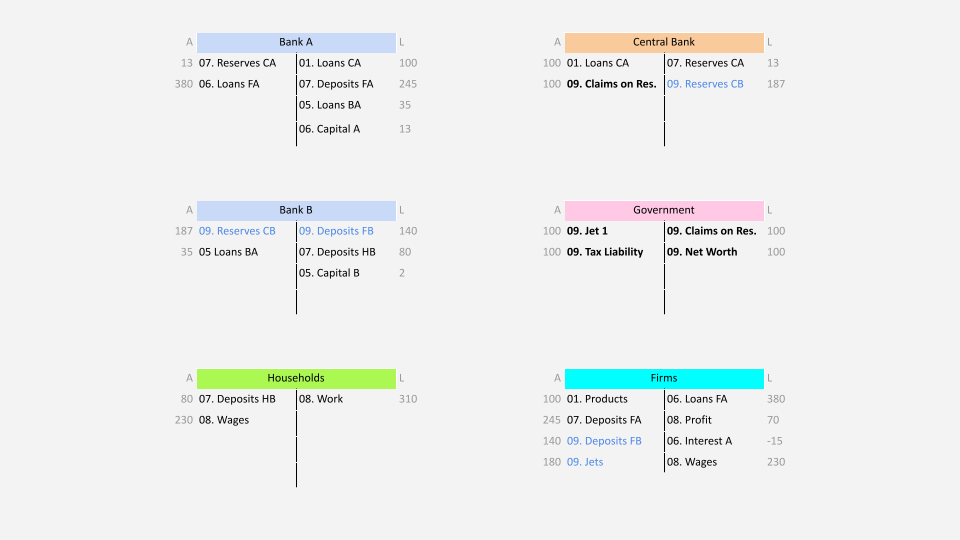

09. Government imposes a tax liability and purchases a jet by crediting an account at Bank B, where the firm selling the jet holds its account.
Claims of reserves are recorded on the asset side of the central bank's balance sheet.
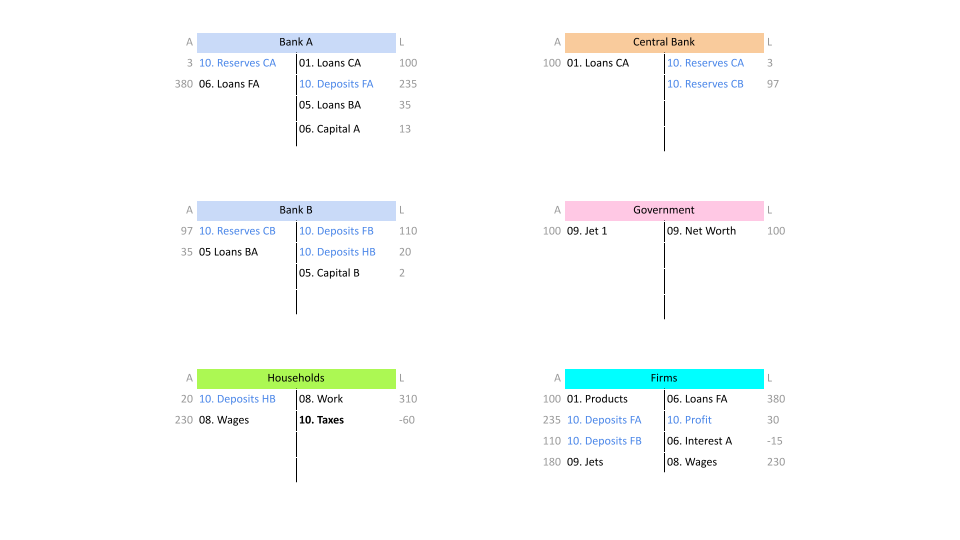

10. To cover the spending on the jet, the government imposes a uniform tax on all deposits.
Self-Imposed Bond Constraint
Deficit Spending - relaxing tax reliance.
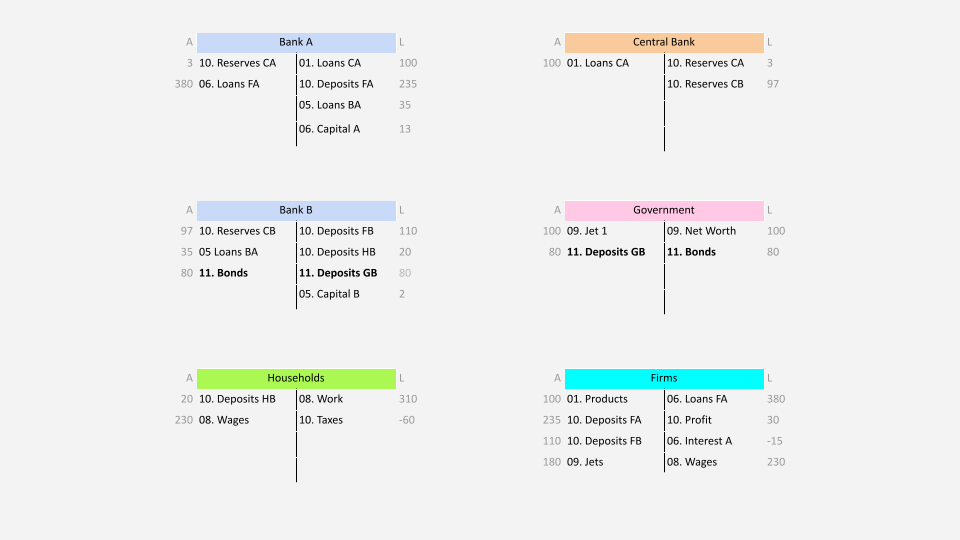

Let the government buy the second jet without imposing additional tax, resulting in deficit spending.
Government decides to tie its own hands behind its back by requiring itself to sell a bond to a bank before it engages in deficit spending.
11. Bank B buys the bond by crediting the government's account.
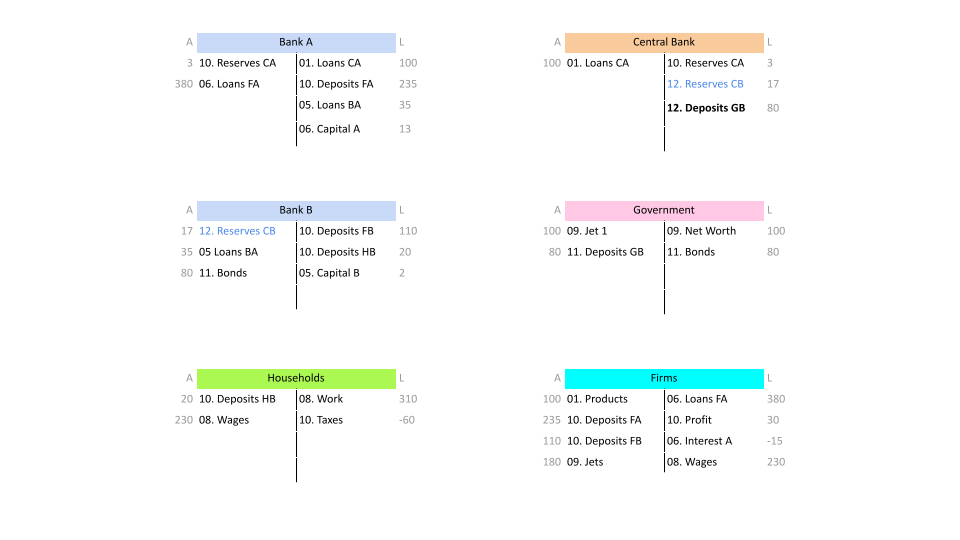

Now, the government is required to shift its deposits to the central bank before it can buy the second jet.
12. The government transfers its deposit to a central bank account. The bank needs to debit the government's deposit by reducing its reserves.
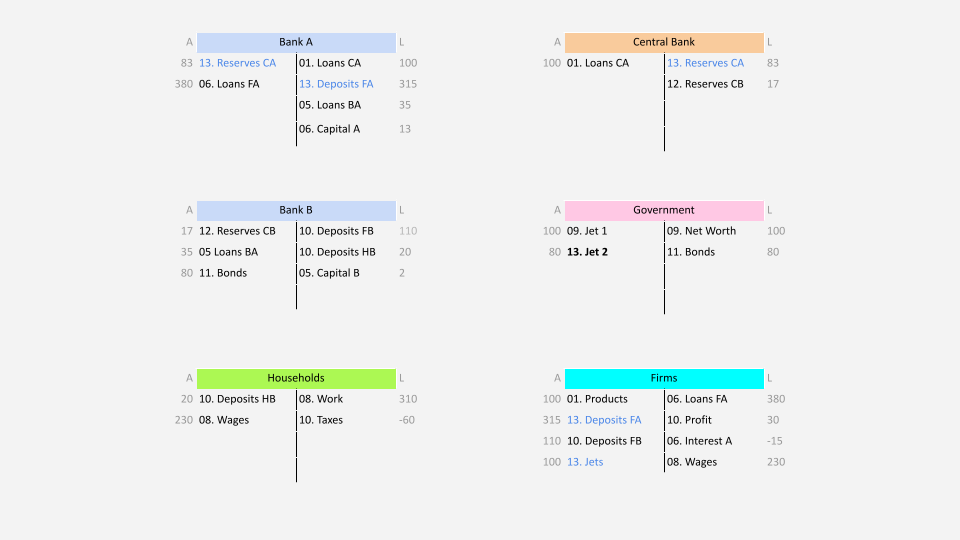

13. The government buys the second jet. The account of the military company in Bank A is credited, as are the Bank A's reserves.
Self-Imposed Inflation Constraint
Deficit Spending - relaxing Tax and Self-Imposed Bond Sales Constraints. State Basic Income.
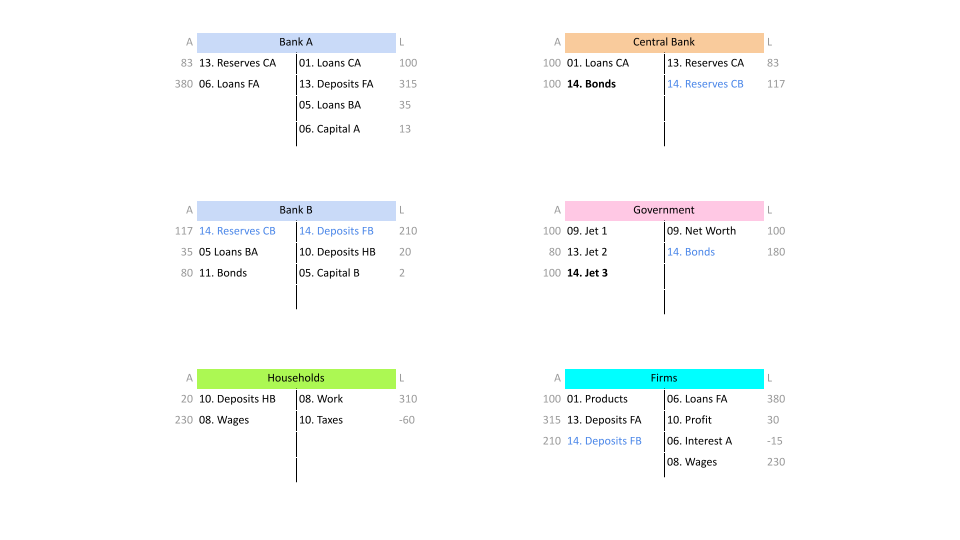

Let the government buy a third jet without requiring itself to sell a bond to a bank on the primary market beforehand.
14. Instead, let us establish a rule that the government can sell the bond automatically to the central bank.
This effectively means that the government can spend without the need to collect taxes or sell bonds on the market.
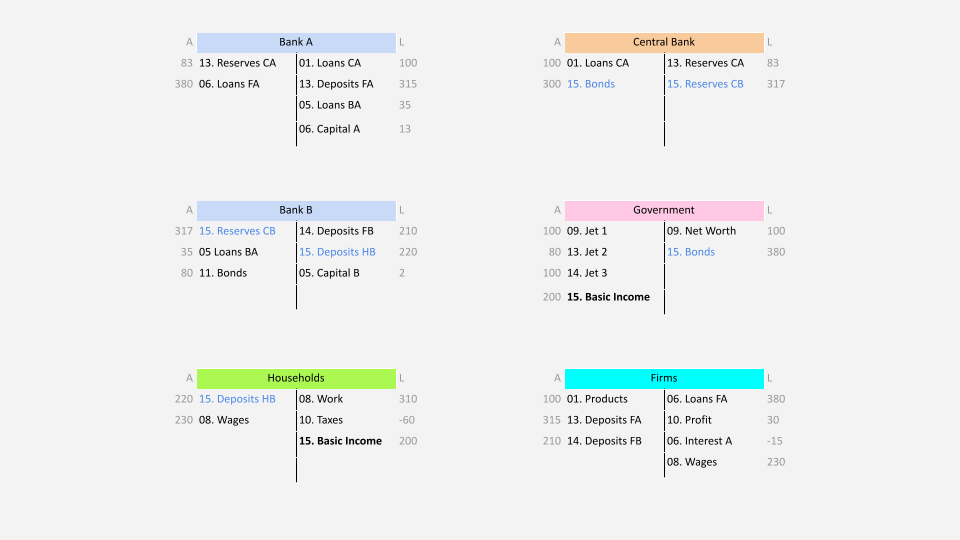

The government determines the amount of basic income, taking into account constraints set by planned inflation.
15. The government distributes basic income to everyone. New money (deposits and reserves) is injected into circulation.
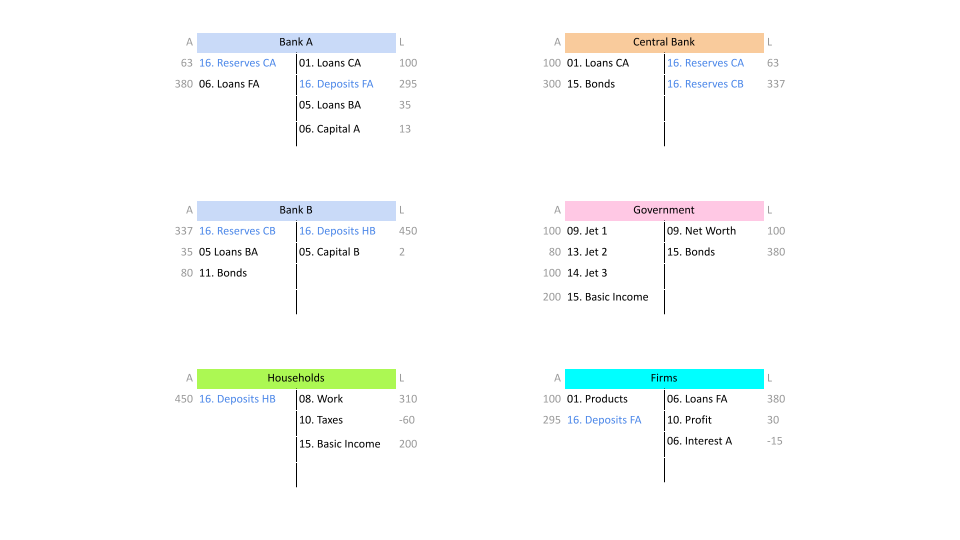

16. The firm pays the wages.
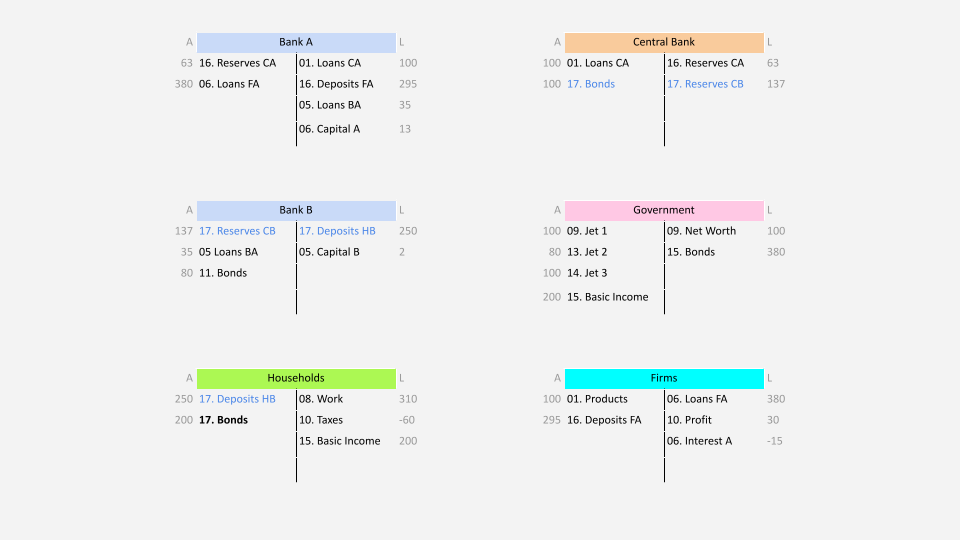

If the inflation forecast indicates that inflation needs to be tempered, it may call for a reduction in the money in circulation.
17. As a result, the government sells bonds to households through the central bank, reducing the amount of money in circulation to maintain the targeted stable inflation.
NON-STATE MONEY
Cryptoplatforms & Non-state Money Circulation
Interaction of Cryptoplatforms with Firms, Households and People in Need. The creation and reduction of money in circulation. Basic Income.
Coming soon
Banks & Non-state Money Circulation
Interaction of Banks with Firms, Households and People in Need. The creation and reduction of money in circulation. Basic Income.
